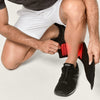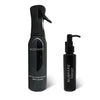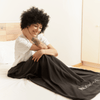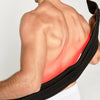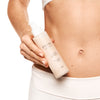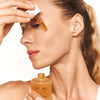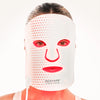-
Light Therapy And Alzheimer’s – A Promising Perspective
By: Melissa A. Kay Those afflicted with Alzheimer’s (the most common form of dementia) and the people who love them are constantly concerned about the steady decline in memory as well as seemingly odd thought patterns and unusual behaviors which affect daily life. Over time, there have been some medical breakthroughs in the field of Alzheimer’s research, but overall, the future is generally grim,... -
Benefits of Infrared Saunas for Pain
Let’s be real; infrared saunas are kind of a big deal. From weight loss to clear skin, the benefits are endless. However, one of the biggest reasons people seem to turn to infrared saunas is because of pain. Honestly; we aren’t the young ducklings we used to be. And whether it’s from an injury, age, or just day-to-day activities, we all get pain from... -
How Phototherapy Can Relieve Symptoms of Depression and Anxiety
As mood disorders like depression and anxiety are on the rise, the need for healthy coping mechanisms rises with it. Daniel F. Kripke, M.D, professor of psychiatry at the University of California San Diego, theorizes that light therapy may remedy feelings of depression and anxiety, especially in those who experience it seasonally. Phototherapy has the ability to mimic light that is necessary for a... -
FAQ
FAQS About Red Light Therapy & Fat Loss I'VE HEARD OF LASER LIPO, ULTRASOUND CAVITATION, AND FREEZING FAT WITH CRYPOLISIS. HOW DOES LED PHOTOTHERAPIES COMPARE TO OTHER TECHNOLOGIES FOR FAT LOSS? The main difference is The Lipo Wrap treats a larger treatment area with 600 diodes consistently working over the entire area during the treatment, with the added benefit of infrared heat to increase... -
Harvard Researchers Discover One Way That Low Level Light Therapy Works
Low level light therapy is the use of a certain part of the spectrum of near infrared light. This type of therapy, called LLLT for short, has been confirmed by researchers worldwide to be great for reducing pain, inflammation, and swelling. It promotes healing of wounds, deeper tissues and nerves, and prevents tissue damage by reducing the number of cells dying from trauma, lack...
NeuroWrap Pulse Benefits
Timeline
Nushape exists to develop top-tier, industry-leading LED light therapy devices for photobiomodulation. Implementation of specific wavelengths of LED light can effectively enhance bodily processes by improving mitochondrial health, ATP production; ultimately aiding the cellular ability to work faster, stronger.
















